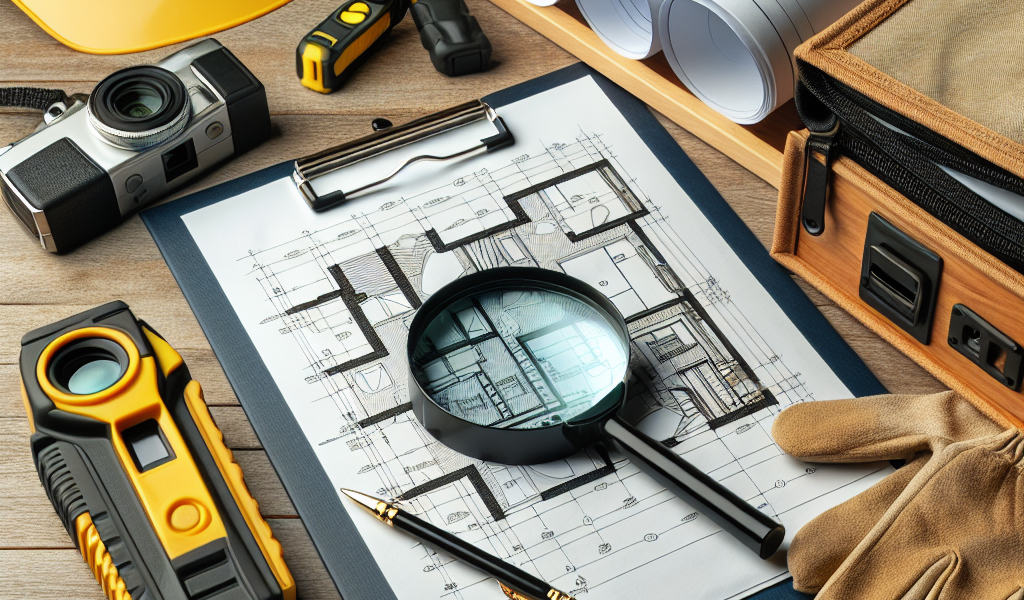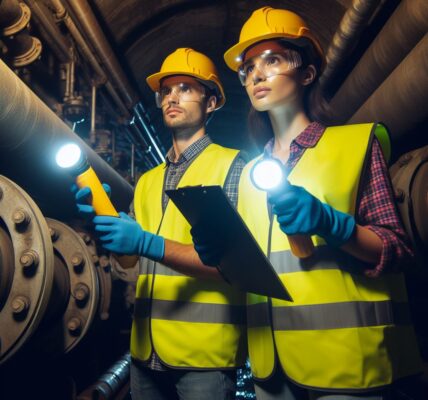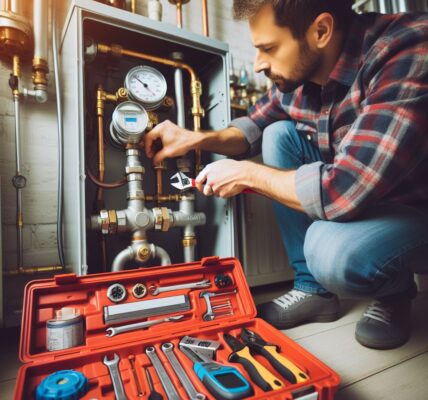Property examination essentials are crucial for professionals in the real estate industry as they equip them with the necessary tools and knowledge needed to conduct a thorough assessment of a property. These essentials include various techniques and methods that professionals can utilize to evaluate a property’s condition, identify potential issues or defects, and determine its overall value. By understanding these essentials, professionals can effectively analyze various aspects of a property such as its structural integrity, electrical and plumbing systems, and the presence of any hazardous materials. This enables them to provide accurate and comprehensive reports to their clients, helping them make informed decisions regarding their investment. Furthermore, having a thorough understanding of property examination essentials ensures that professionals are able to comply with industry standards and regulations, providing a trustworthy and reliable service to their clients.
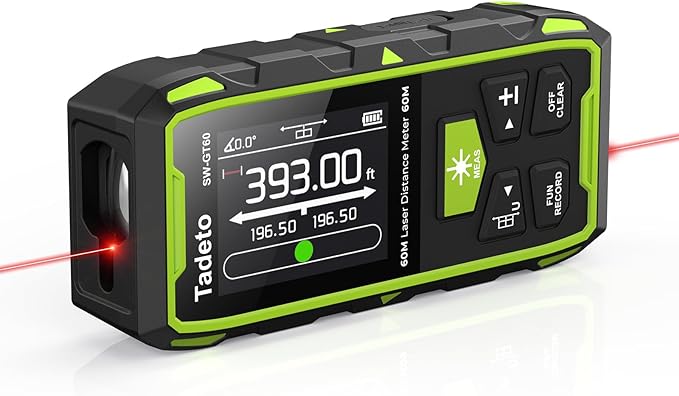
The Importance of Using Quality Tools for Property Examination
Property examination is a crucial step in the real estate industry. Whether you are buying, selling, or managing properties, it is essential to have accurate and detailed information about the condition of the property. To achieve this, using quality tools for property examination becomes imperative.
First and foremost, investing in high-quality tools ensures accuracy and reliability in gathering information about a property. Tools such as measuring tapes, laser levels, and moisture meters allow professionals to obtain precise measurements and detect any potential issues that may not be visible to the naked eye. Accurate measurements are essential for determining dimensions of rooms and spaces within a property, ensuring that furniture fits properly or renovations can take place without complications.
Similarly, moisture meters play a vital role in identifying hidden water leaks or dampness problems within walls or floors. These issues can lead to serious structural damage if left unnoticed. By utilizing reliable moisture meters during property examinations, professionals can accurately assess whether there are any underlying water-related problems that need immediate attention.
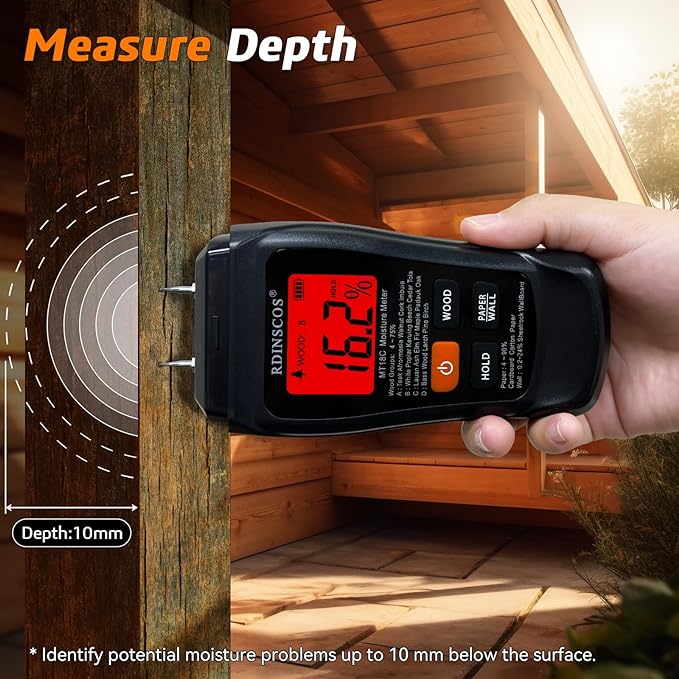
In addition to accuracy, using quality tools also helps save time during property examinations. Imagine having to manually measure every room’s dimensions without the help of modern measuring devices – it would undoubtedly be an arduous task consuming valuable time! However, with efficient tools like laser levels that provide instant measurements across multiple surfaces simultaneously reduces the time required for these tasks significantly.
Moreover, high-quality cameras play an integral role in capturing detailed images of a property’s interior and exterior conditions. Professionals use these images not only as evidence but also as references when discussing findings with clients or colleagues who were unable to attend the inspection physically. Clear pictures taken by advanced cameras enable better communication among team members involved in decision-making processes regarding repairs or modifications needed on a particular property.
Furthermore, using quality tools promotes professionalism within the industry by enhancing credibility among clients and peers alike. When prospective buyers hire inspectors who arrive at their location equipped with state-of-the-art instruments such as thermal imaging cameras or drone technology, it instills a sense of trust and confidence. Clients recognize that these professionals are dedicated to delivering the best service possible, ensuring transparency in their inspections.
Additionally, using high-quality tools demonstrates an understanding of the industry’s standards and keeps professionals up-to-date with technological advancements. The real estate sector is ever-evolving, with new tools and techniques being introduced regularly. Investing in quality tools allows professionals to stay ahead of the curve by incorporating the latest technologies into their examination processes. This not only ensures efficiency but also showcases a commitment to providing top-notch services.
To conclude, utilizing quality tools for property examination is crucial due to its various advantages. Accuracy and reliability are essential when gathering information about a property’s condition, ensuring accurate measurements and identification of potential issues such as water leaks or dampness problems. Quality tools save time during examinations while enhancing professionalism within the industry by improving credibility among clients and colleagues alike. Furthermore, investing in reliable instruments enables professionals to stay updated with technological advancements while maintaining high standards in their work practices. Thus, using quality tools should be considered an essential aspect of every property examination process.
Essential Tools Every Property Inspector Should Have
In the field of property inspection, having the right tools is essential to ensure accurate and thorough assessments. With a multitude of equipment available, it can be overwhelming for aspiring property inspectors to determine which tools are necessary for their trade. This article will discuss the essential tools every property inspector should have in their arsenal.
First and foremost, a reliable flashlight is an absolute must-have tool for any property inspector. Inspecting properties often requires working in dark or poorly lit areas such as crawl spaces or attics. A powerful flashlight allows inspectors to illuminate these spaces and identify potential issues that may otherwise go unnoticed. Additionally, flashlights with adjustable beams can provide focused light on specific areas, enabling inspectors to examine details more closely.
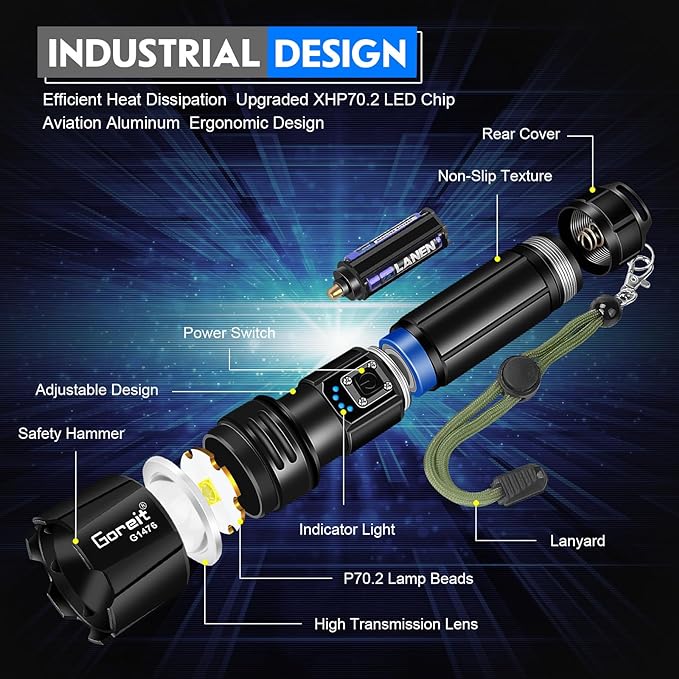
A digital camera is another indispensable tool for property inspectors. Documenting findings visually is crucial in creating comprehensive inspection reports and communicating observations effectively with clients. High-resolution images captured by digital cameras allow inspectors to capture intricate details that might be missed during on-site visits. Furthermore, photographs serve as concrete evidence of any issues discovered during inspections, protecting both the inspector and the client from potential disputes.
Moisture meters are vital instruments that measure moisture content levels in various materials such as wood or drywall within a property. Moisture intrusion can lead to structural damage or mold growth if left untreated; hence accurately detecting moisture levels becomes paramount during inspections. A reliable moisture meter assists in identifying problem areas where excess moisture might accumulate, ensuring timely interventions before irreversible damage occurs.
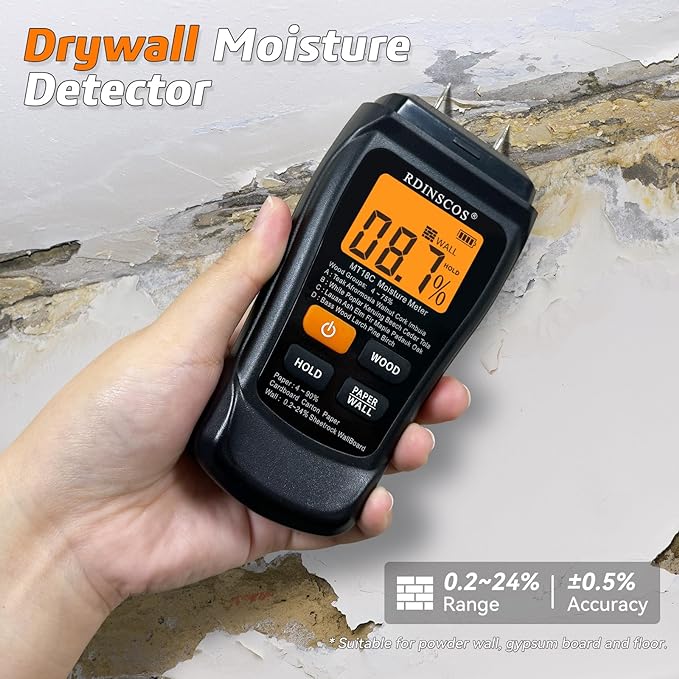
Thermal imaging cameras have become increasingly popular among property inspectors due to their ability to detect hidden problems not visible through conventional means alone. These specialized cameras capture thermal radiation emitted by objects and convert them into easily interpretable visual representations called thermograms. Thermal imaging technology enables inspectors to identify insulation gaps, water leaks behind walls or ceilings, electrical system irregularities, or even termite infestations without invasive procedures – providing invaluable insight into a property’s condition.
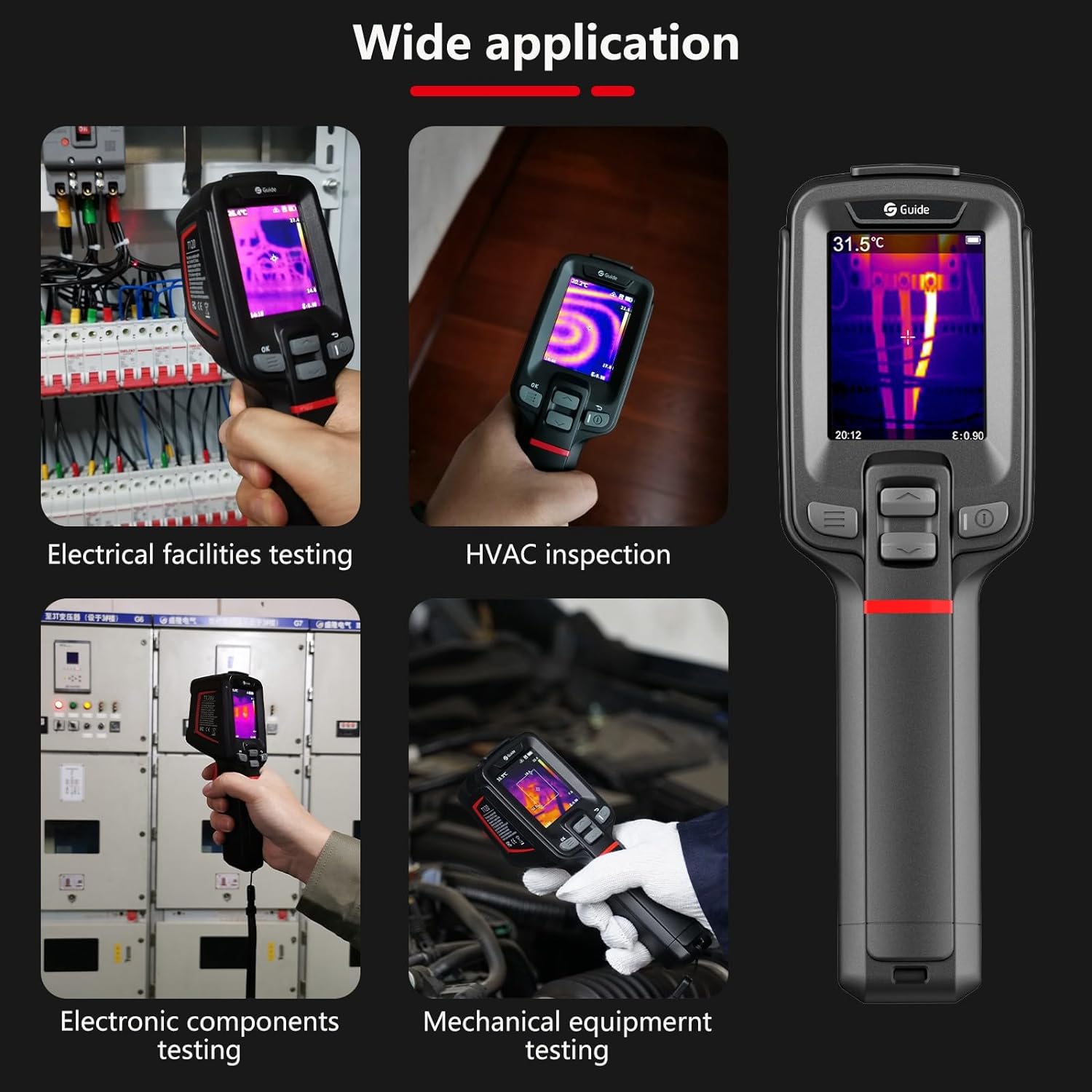
A good quality voltage detector is an essential tool to ensure the safety of both the inspector and the property being examined. Voltage detectors are used to identify live electrical currents present in outlets, switches, or electrical panels. By alerting inspectors of potential electrical hazards, such as exposed wiring or faulty circuits, these devices play a crucial role in preventing accidents and injuries during inspections.
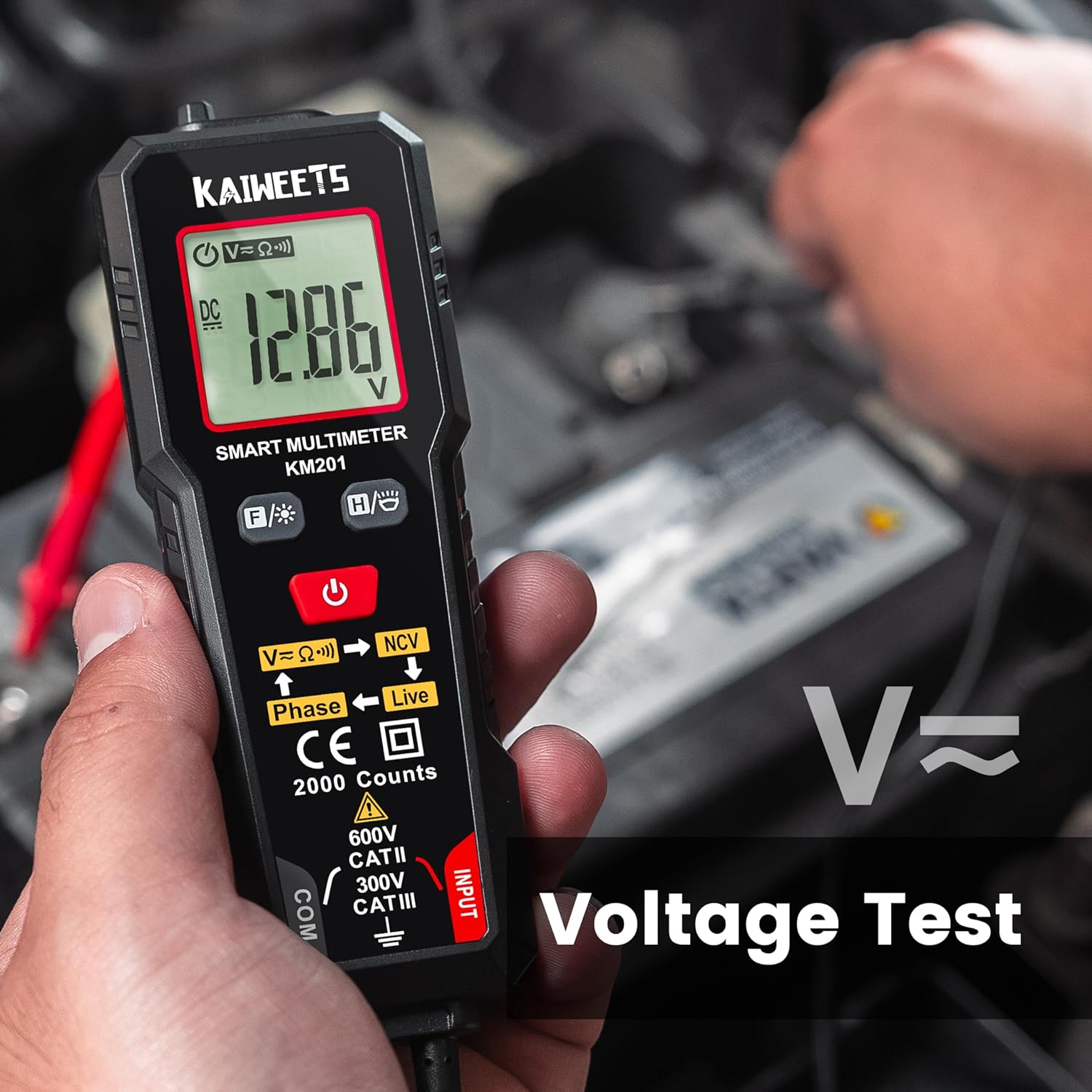
Lastly, a comprehensive set of hand tools is indispensable for any property inspector. These may include screwdrivers, pliers, tape measures, utility knives, ladders – among others. Hand tools allow inspectors to access hard-to-reach areas easily and perform necessary tasks like opening panels or removing covers for closer examination.
In conclusion, possessing the right tools is fundamental for property inspectors in conducting thorough assessments efficiently and accurately. A reliable flashlight ensures visibility in dark spaces while a digital camera captures visual evidence of findings. Moisture meters help detect moisture intrusion issues promptly before they escalate into larger problems. Thermal imaging cameras offer non-invasive detection capabilities beyond human perception. Voltage detectors guarantee the safety of both the inspector and the inspected properties by identifying live electrical currents accurately. Finally, a complete set of hand tools enables ease of access and effective execution during inspections. Equipping oneself with these essential tools lays a strong foundation for successful property inspections – promoting trust between inspectors and their clients while ensuring high-quality service delivery within this profession
How to Choose the Right Inspection Equipment for Property Examination
When it comes to property examination, having the right inspection equipment is essential. Choosing the appropriate tools can help ensure a thorough and accurate assessment of the property. With advancements in technology, there are now various options available for property inspectors to choose from.
One of the most basic and essential tools for property examination is a flashlight. A powerful flashlight allows inspectors to illuminate dark corners and see hidden areas that may not be easily visible otherwise. Inspectors should opt for flashlights with adjustable brightness settings to cater to different lighting needs during inspections.
Thermal imaging cameras have also become an increasingly popular tool among property inspectors. These cameras use infrared radiation to detect temperature differences in objects or surfaces. By identifying hotspots or cold spots, thermal imaging cameras can reveal potential issues such as insulation problems, water leaks, or electrical faults.
Moisture meters are another crucial tool in any inspector’s arsenal. These devices measure moisture levels in materials like wood or drywall and help identify possible sources of water damage or mold growth within a property. Moisture meters come in both pin-type and pinless varieties; while pin-type meters provide more precise measurements by penetrating the material being tested, pinless meters offer non-destructive testing by measuring moisture content on the surface.
To assess air quality within a building, air quality monitors are indispensable tools for inspectors. These devices measure parameters such as carbon dioxide levels, humidity, temperature, and volatile organic compounds (VOCs). High VOC concentrations can indicate poor indoor air quality due to off-gassing from certain building materials or pollutants present in the environment.
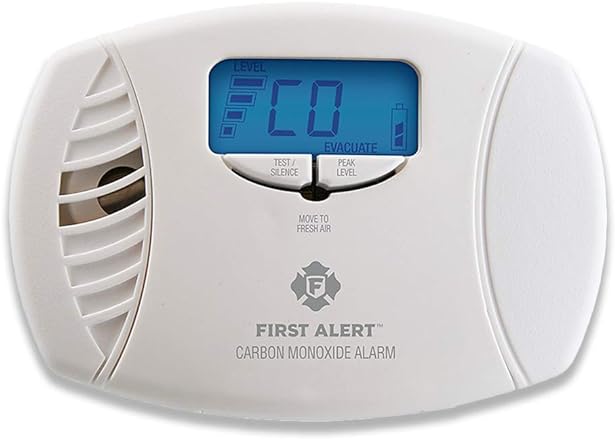
Another critical aspect of property examination is assessing structural integrity. This requires tools such as laser levels and plumb bobs that assist in checking whether walls are straight and level or if there are any deviations indicating potential structural issues like settlement or shifting foundations.
In addition to handheld tools mentioned above, some larger equipment plays a vital role in conducting thorough examinations of properties too – such as drones. Drones equipped with high-resolution cameras can capture detailed aerial images and videos, providing a comprehensive overview of the property’s exterior. This technology allows inspectors to assess hard-to-reach areas like roofs or chimneys without risking their safety.
For inspections involving electrical systems, testers like voltage detectors and circuit analyzers are necessary tools. Voltage detectors help identify the presence or absence of electrical current in outlets or circuits, ensuring safety during the examination process. Circuit analyzers, on the other hand, provide more detailed information about voltage levels and potential faults within an electrical system.
Lastly, digital inspection software is becoming increasingly popular among property inspectors for organizing and documenting examination findings efficiently. These software solutions often come with customizable checklists that cover various aspects of property inspection – from structural elements to plumbing and electrical systems. By digitizing this documentation process, it not only saves time but also enables easy sharing of reports with clients.
In conclusion, choosing the right inspection equipment is crucial for conducting thorough property examinations accurately. From basic tools like flashlights to advanced devices like thermal imaging cameras or drones, each tool serves a specific purpose in identifying potential issues within a property. By investing in these essential tools of the trade, property inspectors can ensure that they have everything they need to conduct comprehensive assessments and provide accurate reports to their clients.
Top 10 Must-Have Tools for a Successful Property Inspection
A successful property inspection requires a well-equipped inspector armed with an arsenal of tools to accurately assess and evaluate various aspects of a property. These essential tools not only facilitate the inspection process but also ensure that all potential issues are identified and documented thoroughly. In this article, we will discuss the top 10 must-have tools for a successful property inspection.
First and foremost, every inspector needs a reliable flashlight. A high-quality flashlight enables inspectors to navigate through dark or poorly lit areas, such as attics or crawlspaces, ensuring that no corner is left unexplored. Additionally, it allows them to spot hidden defects or signs of damage that may not be visible under normal lighting conditions.
Next on the list is a moisture meter. This indispensable tool helps inspectors detect and measure excessive moisture levels in various materials within a property. By identifying areas affected by water intrusion or leaks, inspectors can prevent further damage from occurring and recommend appropriate remediation measures to homeowners.
Thermal imaging cameras have become increasingly popular among property inspectors due to their ability to identify temperature differences in building materials. These cameras allow inspectors to detect energy inefficiencies, insulation gaps, electrical hotspots, plumbing leaks, and other thermal anomalies that may go unnoticed with the naked eye.
To gauge air quality within properties accurately, an inspector should possess a combustible gas detector. This tool can alert them to potentially hazardous gas leaks from appliances such as stoves or water heaters – ensuring both safety for occupants and compliance with regulations regarding indoor air quality standards.
Another crucial tool for inspecting properties is an electrical tester pen. This device aids in evaluating electrical outlets for proper grounding and voltage presence without having to disassemble fixtures or remove outlet covers unnecessarily – thus saving time while maintaining safety protocols during inspections.
For inspecting hard-to-reach places like roofs or tall ceilings safely, an inspector must utilize an extension ladder – preferably one made from durable materials such as aluminum. This tool enables them to access elevated areas with ease, providing a comprehensive assessment of the property’s exterior.
To assess the structural integrity of a building accurately, inspectors rely on a high-quality moisture probe. By measuring the moisture content within wood or other building materials, this tool helps identify potential rot, decay, or water damage that could compromise the structure’s stability.
Inspectors also need an arsenal of hand tools such as screwdrivers and pliers. These versatile instruments allow them to remove covers from electrical panels or HVAC systems for further inspection – aiding in identifying any underlying issues that may require immediate attention.
A comprehensive inspection should also include a thorough evaluation of plumbing systems. To detect leaks or blockages in pipes effectively, inspectors employ drain cameras. These devices provide visual confirmation and documentation of pipe conditions, ensuring accurate diagnoses and recommendations for repairs.
Last but not least is an essential tool: a digital camera equipped with video recording capabilities. This multipurpose device enables inspectors to capture images and videos as evidence during inspections—these visuals help create detailed reports while enabling clients to have a clear understanding of identified concerns.
In conclusion, having these top 10 must-have tools for property inspections is crucial for every inspector striving for success in their field. From flashlights and thermal imaging cameras to gas detectors and extension ladders, each tool plays its part in ensuring thorough evaluations and accurate reporting when examining properties’ various aspects. Armed with these essential tools of the trade, property inspectors can confidently navigate through inspections – safeguarding both their reputation as professionals and the interests of homeowners seeking reliable assessments before making significant investment decisions.
A Guide to Properly Maintaining and Caring for your Inspection Tools

Inspecting a property is an essential task that requires the use of various tools. These tools enable professionals to thoroughly examine different aspects of a property, such as its structure, electrical systems, plumbing, and more. However, it is not enough to simply own these inspection tools; one must also take proper care of them to ensure their longevity and effectiveness. In this guide, we will discuss the importance of maintaining and caring for your inspection tools.
First and foremost, regular cleaning is crucial for preserving the functionality of your inspection tools. After each use, it is recommended to clean them meticulously. This involves removing any debris or dirt that may have accumulated during the examination process. Using a soft brush or compressed air can help remove particles from hard-to-reach areas.
In addition to regular cleaning, lubrication plays a significant role in maintaining your inspection tools. Lubricants aid in reducing friction between moving parts within the tool’s mechanism. Applying lubricants at specific points indicated by the manufacturer prevents rusting or corrosion caused by moisture accumulation over time.
Furthermore, proper storage is paramount in keeping your inspection tools safe and secure when they are not in use. To prevent accidental damage or misplacement, invest in a toolbox or carrying case specifically designed for these instruments. Storing them away from extreme temperatures and direct sunlight ensures their longevity.
Moreover, calibration should never be overlooked when discussing maintenance practices for inspection tools. Periodic calibration guarantees accuracy during examinations and ensures that measurements are consistent across different inspections conducted by professionals within an organization or industry sector.
Additionally, routine checks on battery-powered devices are vital for optimal performance when utilizing such equipment during inspections. Regularly inspecting batteries for signs of leakage or deterioration prevents unexpected failures while working on-site.
Proper handling techniques are equally important in prolonging the lifespan of your inspection equipment. Avoid subjecting them to excessive force or impacts that may cause damage to delicate components. Using tools for their intended purpose and following manufacturer guidelines will help prevent unnecessary wear and tear.
Another crucial aspect of tool maintenance is periodically inspecting cords, wires, or cables used in electrical inspection tools. Examine them for fraying, exposed wiring, or other signs of damage that could pose a safety hazard during operation. If any issues are found, it is imperative to repair or replace these parts immediately.
Lastly, regular training on equipment usage and maintenance procedures is essential for professionals working with inspection tools. Staying up-to-date with the latest techniques and best practices not only improves efficiency but also ensures the longevity of your investment.
In conclusion, proper maintenance and care for your property examination essentials are vital in guaranteeing their effectiveness and longevity. Regular cleaning, lubrication, storage in appropriate conditions, calibration checks, battery inspections, correct handling techniques – all contribute to maintaining the functionality of your inspection tools. Furthermore, regularly examining cords or wires used in electrical equipment prevents potential safety hazards. Finally yet importantly remains continuous training to enhance professionals’ knowledge about utilizing and preserving their valuable inspection instruments properly. By implementing these practices consistently into your routine as an inspector or property owner conducting occasional examinations yourself will ensure reliable results throughout numerous inspections while maximizing the lifespan of your valuable tools
The Role of Technology in Enhancing Property Examination Processes
In today’s fast-paced world, technology plays a vital role in every aspect of our lives, and the field of property examination is no exception. With the advancements in technology over the years, professionals in this field now have access to a wide range of tools that greatly enhance their ability to assess and evaluate properties accurately. These tools not only save time but also provide more accurate results, ultimately leading to improved decision-making processes.
One such tool is 3D scanning technology. This innovative method allows property examiners to create highly detailed digital models of buildings or spaces within them. By using laser scanners, these devices capture millions of data points that can be transformed into precise three-dimensional representations. This technology has revolutionized the way property examinations are conducted by providing an efficient and accurate means of capturing information about a building’s condition.
Another significant technological advancement in this field is aerial photography and drone surveys. Instead of relying solely on ground-level observations, property examiners can now use drones equipped with high-resolution cameras to capture images from different angles and heights. These images provide valuable insights into various aspects such as roof conditions, structural integrity, and overall appearance. The use of drones eliminates the need for manual inspections at elevated heights or hard-to-reach areas while ensuring safety for both examiners and property owners.
Furthermore, thermal imaging has become an indispensable tool for property examination professionals. Using infrared cameras, these devices detect variations in temperature across surfaces which help identify potential issues such as heat loss or moisture intrusion invisible to the naked eye. Thermal imaging enables examiners to uncover hidden problems that could lead to costly repairs if left unaddressed.
As we delve deeper into technological advancements within this industry, it becomes evident how virtual reality (VR) simulations are transforming the way properties are examined remotely or before they even exist physically. VR allows stakeholders like architects or investors to visualize architectural plans digitally through immersive experiences. By wearing VR headsets, they can explore a property’s layout, aesthetics, and even test different design concepts without the need for physical prototypes. This technology facilitates collaboration among stakeholders and enhances decision-making processes while saving time and resources.
In addition to these tools, software applications have also emerged as powerful assets in the property examination process. Advanced programs now enable professionals to generate detailed reports with accurate measurements, annotations, and images. These reports provide comprehensive documentation of a property’s condition that is easily accessible by all stakeholders involved. Moreover, data management systems help organize vast amounts of information gathered during examinations efficiently. By digitizing records and automating workflows, these systems enhance productivity and reduce the risk of errors or loss of vital data.
While technology has undoubtedly revolutionized property examination processes by providing innovative tools like 3D scanning technology, aerial photography drones, thermal imaging devices, virtual reality simulations, software applications for generating detailed reports and managing data – it is essential to acknowledge that human expertise remains paramount in this field. Technology acts as an aid rather than a replacement for skilled professionals who possess years of experience and knowledge required for accurate assessments.
In conclusion, technology has significantly enhanced the way properties are examined today by offering various innovative tools such as 3D scanners capable of creating precise digital models or aerial photography drones capturing high-resolution images from different angles. Thermal imaging helps uncover hidden problems invisible to the naked eye while virtual reality allows stakeholders to visualize architectural plans digitally before construction begins physically. Software applications simplify report generation and data management processes while ensuring accuracy throughout examinations. However useful these technologies may be; it is crucial not to overlook the importance of human expertise in conducting accurate evaluations ultimately benefiting both examiners and property owners alike.
Common Challenges Faced by Inspectors and the Tools that Can Help Overcome Them
Property inspection is a critical aspect of real estate transactions. It provides potential buyers with valuable information about the condition of a property, allowing them to make informed decisions. However, inspectors often face various challenges during their inspections that can impact the quality and accuracy of their reports. Fortunately, there are several tools available to help overcome these challenges and enhance the efficiency and effectiveness of property examinations.
One common challenge faced by inspectors is access limitations. Some properties may have restricted areas or be difficult to reach due to factors such as locked doors, cluttered spaces, or overgrown vegetation. These obstacles can impede thorough inspections and prevent inspectors from examining certain areas properly. To address this challenge, inspectors can utilize tools like lock picking sets for gaining access to locked doors legally or drone technology for inspecting hard-to-reach places such as rooftops or tall structures.
Another challenge inspectors encounter is identifying concealed defects within a property’s structure. Superficially, buildings may appear structurally sound; however, underlying issues like hidden water leaks or faulty electrical wiring can pose serious risks that only become evident over time. Thermal imaging cameras offer a solution in such cases by detecting temperature variations within walls or ceilings caused by moisture intrusion or electrical faults invisible to the naked eye.
Inspectors also face challenges related to documenting their findings accurately during inspections. Traditional note-taking methods using pen and paper can be cumbersome and prone to errors when capturing detailed observations about a property’s condition quickly. Digital tools like voice recorders allow inspectors to dictate notes effortlessly while conducting inspections without interrupting workflow significantly. By converting spoken words into written text automatically, these devices ensure accurate documentation while minimizing distractions.
Furthermore, gathering data on-site presents another challenge for inspectors who need quick access to relevant information regarding building codes, regulations, or safety guidelines applicable in specific locations during an inspection process. Mobile applications specifically designed for property inspection can provide inspectors with instant access to such information, saving time and ensuring compliance.
Inspectors often face challenges in communicating their findings effectively to clients who may not have technical knowledge about the intricacies of property inspections. Dense jargon or complex technical terms can confuse clients and make it difficult for them to understand the implications of reported issues accurately. To overcome this challenge, inspectors can employ interactive tools like digital presentations or 3D modeling software that allow them to present their findings visually. These visual aids simplify complex concepts, making it easier for clients to comprehend and act upon the inspection results appropriately.
Lastly, inspectors encounter challenges related to managing large volumes of data collected during inspections. Paper-based filing systems are cumbersome, prone to loss or damage, and difficult to search through when retrieving specific information later on. Adopting specialized software designed explicitly for property inspection reports streamlines data management processes by allowing inspectors to organize and retrieve information efficiently.
In conclusion, despite the common challenges faced by property inspectors during their examinations, there is a range of tools available that can help overcome these obstacles. From lock picking sets for accessing restricted areas to thermal imaging cameras for detecting concealed defects within structures, these tools enhance efficiency and accuracy in inspections. Digital devices like voice recorders enable accurate note-taking on-site while mobile applications provide instant access to relevant regulations and guidelines. Interactive tools like digital presentations or 3D modeling software aid in effective communication with clients who may lack technical expertise. Finally, specialized software assists in managing large volumes of data generated during inspections more efficiently. By leveraging these essential tools of the trade effectively, inspectors can ensure high-quality property examinations that benefit both buyers and sellers alike
Innovations in Inspection Tools: What’s New in the Industry?
In the ever-evolving field of property examination, staying up to date with the latest tools and technologies is essential. Inspectors are constantly looking for innovative solutions that can enhance their efficiency and accuracy when assessing properties. In this article, we will explore some of the new inspection tools that have emerged in recent years, discussing their advantages and potential impact on the industry.
One notable innovation in property inspection is the use of drones. Drones equipped with high-resolution cameras allow inspectors to capture detailed aerial imagery of properties from various angles. This technology provides a unique perspective that was previously unavailable without expensive equipment or specialized training. With drones, inspectors can quickly identify potential issues such as roof damage or structural defects, even in large or hard-to-reach areas.
Thermal imaging cameras are another valuable tool gaining popularity among property examiners. These cameras detect variations in temperature patterns, which can help identify hidden problems like water leaks or faulty insulation. By visualizing heat signatures within walls or ceilings, inspectors can pinpoint areas requiring further investigation accurately.
Furthermore, advancements in handheld devices have revolutionized how inspections are conducted onsite. Mobile apps specifically designed for property assessment now offer comprehensive checklists and templates for recording findings during inspections efficiently. Inspectors can take photos directly from their smartphones and annotate them with relevant notes—all while automatically generating reports using predefined formats. The convenience and speed offered by these applications significantly streamline the entire process from data collection to report generation.
Integrating advanced sensors into inspection tools has also become increasingly common over time. For example, moisture meters equipped with built-in probes enable inspectors to measure humidity levels within building materials accurately – a crucial factor when identifying mold growth or dampness-related issues accurately.
Additionally, remote monitoring systems provide an extra layer of security during long-term examinations—allowing inspectors to monitor conditions continuously even after leaving a site physically through connected sensors placed strategically throughout a property. Such systems record data related to environmental factors like temperature, humidity, or air quality. This continuous monitoring can help identify patterns or trends that may not be apparent during a single visit.
Moreover, the rise of augmented reality (AR) and virtual reality (VR) technologies has found its way into the property inspection industry. With AR applications, inspectors can overlay digital information onto their real-world view through smartphones or tablets. This capability assists in identifying hidden elements behind walls or beneath floors without causing any damage to the structure itself. VR technology is also being used to create immersive training simulations for new inspectors—allowing them to familiarize themselves with various scenarios they might encounter on the job before stepping foot on an actual site.
In conclusion, innovations in inspection tools are transforming how property examinations are conducted in today’s industry. From drones capturing aerial imagery to thermal imaging cameras detecting hidden issues and handheld devices offering comprehensive checklists – these tools enhance efficiency and accuracy while providing unique perspectives previously unattainable. Integrated sensors and remote monitoring systems offer additional layers of security by continuously recording environmental data long after inspections have ended. Furthermore, augmented and virtual reality technologies enable enhanced visualization capabilities for both onsite inspections and inspector training programs. By embracing these technological advancements, property examiners can optimize their processes and deliver more accurate assessments – ultimately benefiting clients seeking reliable insights into the condition of their properties.
Exploring Specialized Tools for Different Types of Property Examinations
Property examination is an essential part of any real estate transaction. Whether you are buying, selling, or simply assessing the condition of a property, having the right tools can make all the difference. In this section, we will explore specialized tools for different types of property examinations.
When it comes to residential properties, one of the most common tools used by home inspectors is a moisture meter. This device helps determine if there are any areas in the house where moisture levels may be too high. High levels of moisture can lead to mold growth and other structural issues that may not be immediately visible to the naked eye. By using a moisture meter, home inspectors can identify potential problems before they become major headaches for homeowners.
Another important tool for examining residential properties is a thermal imaging camera. These cameras use infrared technology to detect differences in temperature on surfaces within a building. This allows inspectors to identify areas where heat loss or gain may be occurring, indicating insulation issues or HVAC system malfunctions. Thermal imaging cameras are especially useful during energy audits as they help pinpoint inefficiencies in heating and cooling systems.
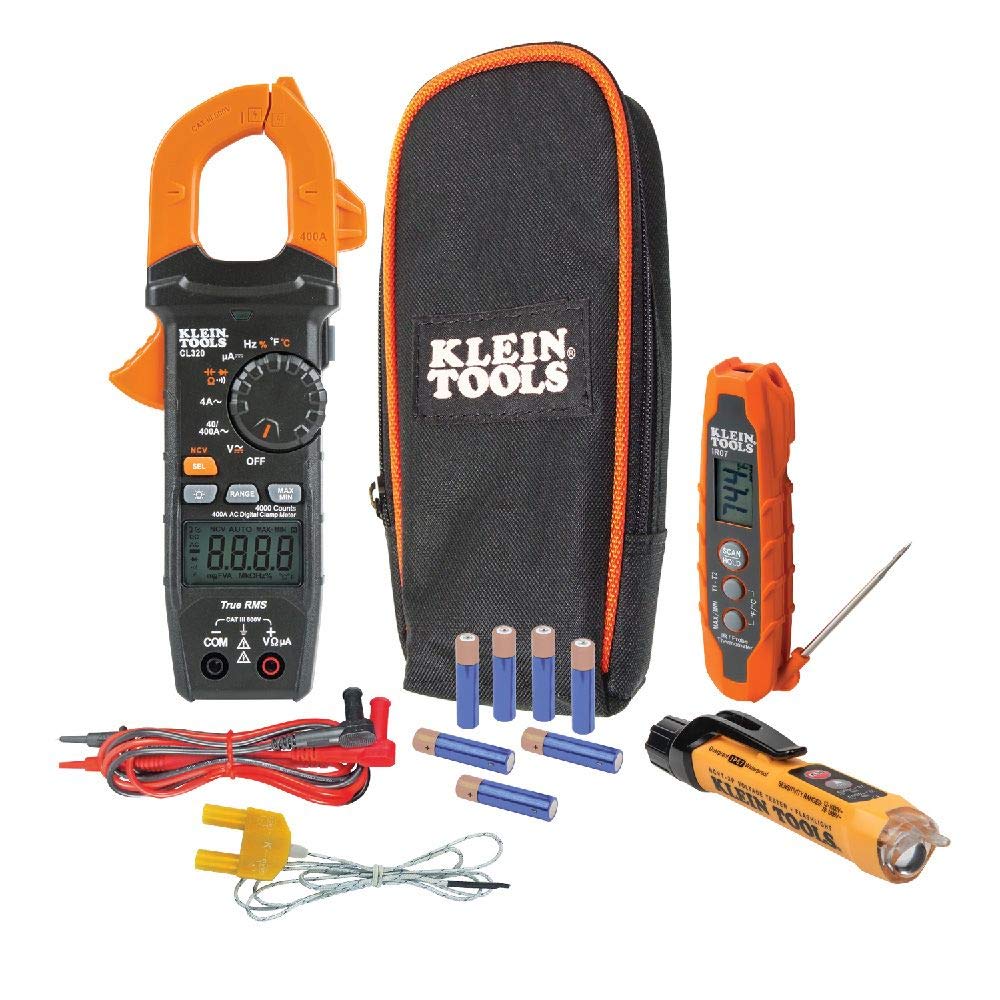
For commercial properties such as office buildings or warehouses, aerial drones have become an increasingly popular tool for conducting inspections. Drones equipped with high-resolution cameras can provide detailed images and videos from multiple angles without putting human inspectors at risk on elevated structures or tight spaces. The ability to quickly capture footage from various perspectives allows for more accurate assessments of roof conditions and overall building integrity.
In addition to these specialized tools, general equipment like ladders and flashlights remain crucial across all property examinations regardless of type or size. Inspecting roofs often requires access through attic crawl spaces or climbing onto roofs themselves; therefore, sturdy ladders must be readily available to reach higher points safely.
Flashlights serve as fundamental aids when examining dark corners such as basements or storage rooms where natural lighting may be limited significantly – their brightness assists with identifying potential hazards like water leaks and electrical issues that may not be easily visible otherwise.
When conducting property examinations, especially for older structures or those with historical significance, the use of non-destructive testing (NDT) tools is invaluable. NDT methods such as ground-penetrating radar and ultrasonic thickness gauges allow inspectors to assess the structural integrity of materials without causing damage. These tools can detect hidden defects in concrete, steel, or other building materials, ensuring a comprehensive examination without compromising the property’s overall condition.
In summary, specialized tools play an essential role in property examinations across various types of real estate transactions. Whether it’s a moisture meter and thermal imaging camera for residential properties or aerial drones for commercial buildings, these tools enable inspectors to identify potential issues accurately. Additionally, general equipment like ladders and flashlights remain vital for accessibility and illuminating dark spaces. Lastly, non-destructive testing tools offer invaluable insights into the structural integrity of older or historically significant properties. By utilizing these essential tools effectively, property examiners can provide clients with accurate assessments that help facilitate informed decisions regarding their real estate investments.
Tips and Tricks for Efficiently Utilizing your Tool Kit during a Property Inspection
Property inspections are a crucial step in the process of buying or selling real estate. Whether you are a buyer, seller, or a real estate agent representing either party, having the right tools at your disposal is essential for conducting an efficient and thorough examination of a property.
One of the most basic yet indispensable tools for any property inspection is a flashlight. This tool allows you to illuminate dark areas such as basements, crawl spaces, or attics that may be difficult to see clearly without adequate lighting. A high-quality flashlight with adjustable brightness levels and a long battery life will enable you to spot any potential issues such as water damage, mold growth, or faulty wiring.
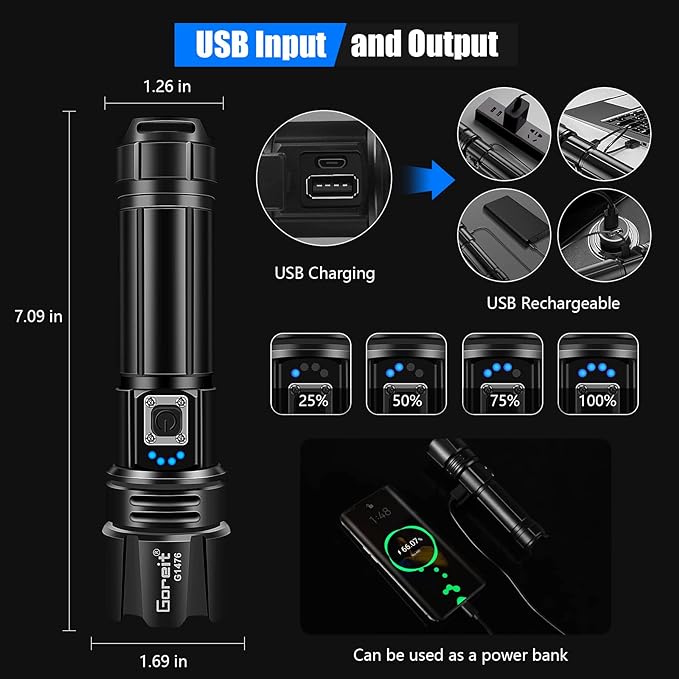
Another invaluable tool for property inspections is a moisture meter. Moisture meters can detect excess moisture within building materials like walls and floors which can indicate leaks or other sources of water damage. By using this tool during your inspection, you can identify hidden problems before they escalate into more significant issues that could cost time and money to repair.
Thermal imaging cameras have become increasingly popular in recent years due to their ability to detect temperature variations behind walls and ceilings. These cameras work by capturing heat signatures emitted by different objects within a structure. By analyzing these heat patterns, inspectors can identify insulation gaps, electrical faults, or even pests hiding inside walls that might not be visible through traditional means alone.
To ensure proper ventilation in buildings, it is important to assess airflow patterns accurately. An anemometer is used specifically for measuring air velocity and determining if there are any ventilation issues within the property being inspected. With this tool’s help, inspectors can assess if heating or cooling systems are functioning efficiently while also checking if there are any blockages hindering proper airflow.
When inspecting properties with gas lines present – especially those equipped with gas appliances like stoves or heaters – having a combustible gas detector on hand is essential. This device detects potentially dangerous levels of gases like methane which could pose a serious safety risk. Utilizing this tool during the inspection process ensures that any gas leaks or faulty connections are identified promptly.
In addition to these tools, a comprehensive property inspection should also include checking for structural integrity. A laser level is an invaluable tool for assessing whether walls, floors, and ceilings are straight and level. This device projects a visible laser beam onto surfaces, allowing inspectors to determine if there are any deviations from the desired measurements which could indicate structural problems.
Lastly, no property inspection toolkit would be complete without a digital camera. While not necessarily a physical tool per se, having a high-resolution camera with you allows for detailed documentation of any issues discovered during the inspection. Photos taken with this camera can be used as evidence in negotiations or disputes over repairs or condition discrepancies later on.
In conclusion, conducting an effective property inspection requires utilizing various tools designed specifically for this purpose. From flashlights and moisture meters to thermal imaging cameras and combustible gas detectors – each tool plays a critical role in uncovering potential problems that may not be visible to the naked eye alone. By assembling your toolkit with these essential items, you will equip yourself with everything necessary to perform thorough examinations efficiently while ensuring your clients’ peace of mind throughout the buying or selling process.In conclusion, property examination essentials are crucial tools that aid in evaluating the condition and value of a property. These tools help inspectors and appraisers accurately assess various aspects such as structural integrity, electrical systems, plumbing, and other vital components. By utilizing these essential tools effectively, professionals can make informed decisions regarding property inspection and valuation.
